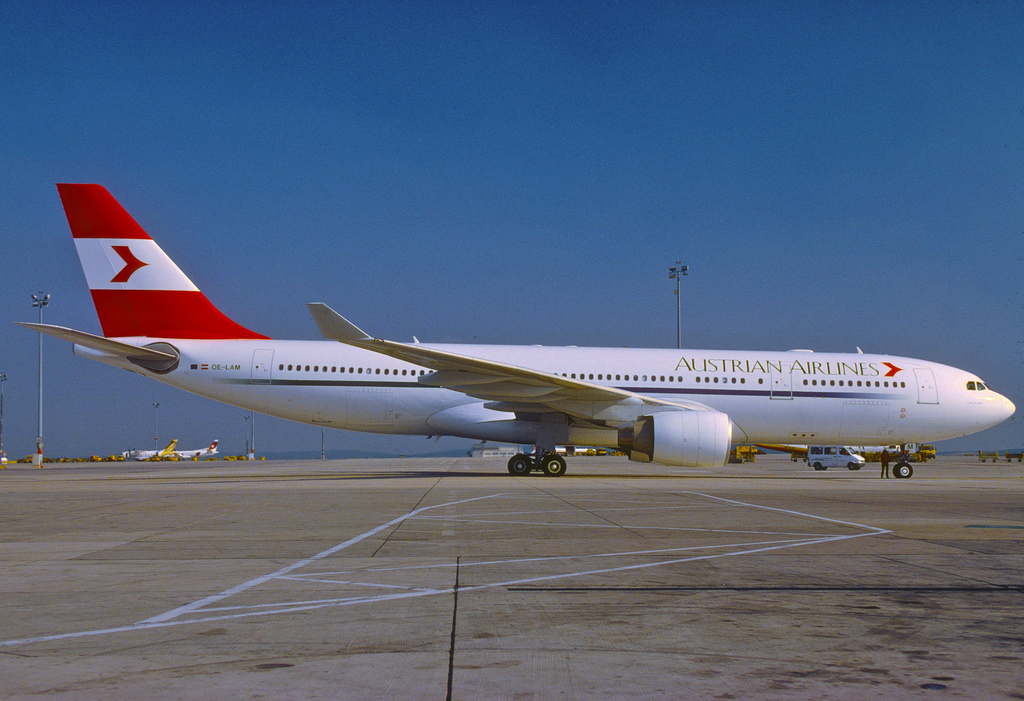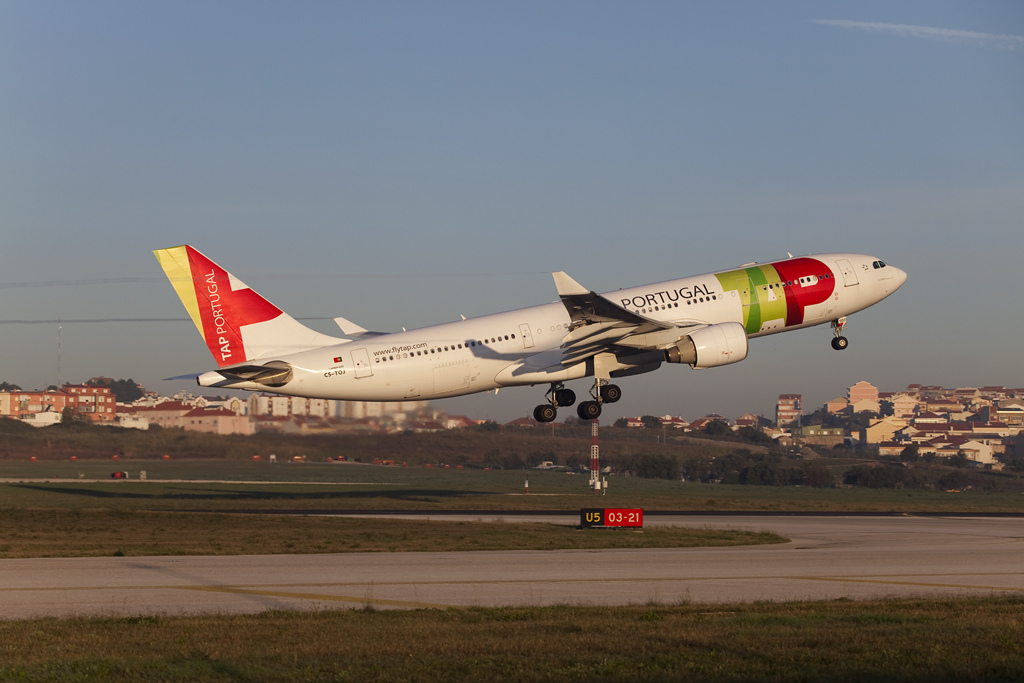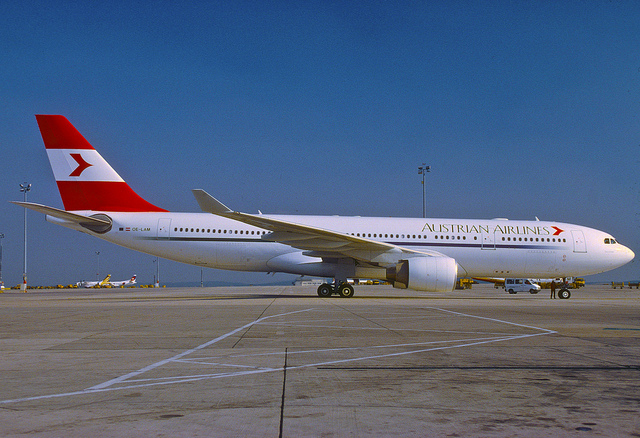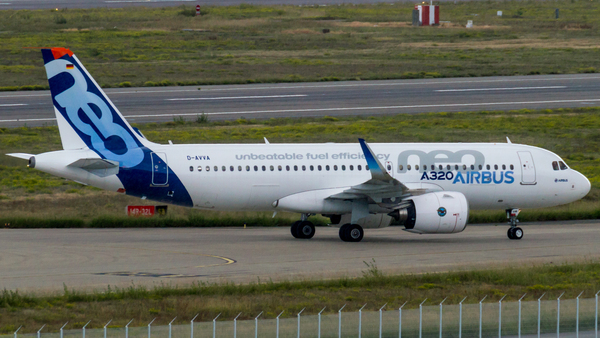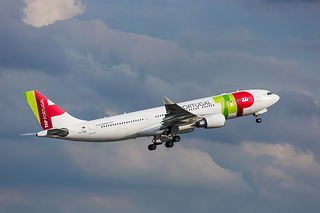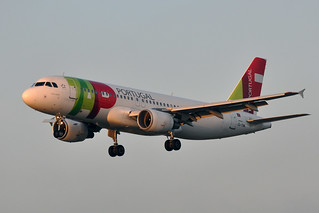TAP A332 at Belem on Jun 8th 2014, runway excursion during backtracking
Last Update: June 8, 2016 / 17:47:41 GMT/Zulu time
Incident Facts
Date of incident
Jun 8, 2014
Classification
Incident
Cause
Runway excursion
Airline
TAP Air Portugal
Aircraft Registration
CS-TOJ
Aircraft Type
Airbus A330-200
ICAO Type Designator
A332
Airport ICAO Code
SBBE
Based on DFDR analysis, the runway excursion that occurred during the 180° turn was the result of two main factors combination:
- Mismanagement of manoeuvring speed during the turn.
- The 180° turn began without established asymmetrical power and at a low speed (4 kt).
- During the turn there was an excessive increase in the power of both engines, with left engine reaching 59% N1 and the right engine 39.8% N1, with a consequent increase in aircraft speed up to 13 kt.
- Inappropriate brakes application during the turn.
- The left brake had a higher application in relation to right brake during the 180° turn, being the manoeuvre to the right side.
Contributing factors:
Being the NOTAM 10475/14 published to the Belém airport, which prohibits 180° turns out of turning pads maneuvers, despite the constraint is not operational, the ATC should not have instructed the flight commander to backtrack via runway 06.
The commander knowing the existence of this NOTAM and the company’s CCS, should not have complied with the instructions given by the ATC. Being the first time that he was operating at this airport, with contaminated runway (wet), at night, in a runway without centerline lights, without external references, being the maximum margin of error within about 3 meters.
The GPIAA reported that the captain, in control of the aircraft during the turn, felt the nose wheels were skidding, the first officer warned, the captain applied brakes but was unable to stop the aircraft before leaving the paved surface.
The GPIAA analysed that a turn on the 45 meter's wide runway, with no turn pad present and the taxiways not providing space for a turn, only left 3 meters margin with a turn radius of 42 meters needed for the aircraft. However, the 3 meters margin were insufficient according to ICAO guidelines, which recommend 4.5 meters margin. Therefore, according to ICAO guidelines, a 180 degrees turn on a 45 meters wide runway is not possible for the A330-200.
The GPIAA wrote: "A330 was instructed by ATC to taxy for line up on runway 06, using a taxy route via the runway (backtrack) compelling necessarily to perform a 180° turning maneuver, even though it is recognized that, because the airport did not integrate a turning area (turn pad) in the designated runway, the aircraft did not meet the recommended ICAO security settings. It is considered that the contamination of the runway was also a factor in that the maneuver was compounded by the nose gear skidding, making it impossible to the crew to control the aircraft. The risk was high with the conditions on the day of operation. It would not be at all possible to prevent the event, for the presented conditions since crew flight preparation, instructions from the controller and crew decision making when confronted with the inability to control the maneuver."
The GPIAA analysed the turn around (also compare the digits before timestamps with the turnaround trajectory map below):
The 180° turn on the runway manoeuvre was started at 23:26:46, being the aircraft on the right of the runway centreline on heading 250°, following a left turn to heading 221° (approximate angle of divergence of 024° to runway QFU of 245°). The maximum registered taxy speed during this phase of maneuvering was 5 Kt. The brakes were symmetrically applied, 10° on the left, 10° on the right. During the maneuver there was effective and assertive communication among pilots with verbalization of actions and coordination/confirmation of values (heading, thrust, ground speed) recommended in the technical manuals.
23:17:03 – Starting right turn (heading 221°; 31,5% N1; 25,9% N2; 4 kt GS).
1- 23:17:04 With the aircraft approaching the right edge of runway 06, it was initiated the 180° turn with 4 kt of ground speed. The N1 power in engines ENG1/ENG2 was 31.5%/25.9%, beginning to be increased at that moment. Asymmetric brakes application, 18° left side and 7° right side.
2- 23:17:08 The turning angle of 75.0°was achieved. During all the turn, the nose wheel maximum angle in relation to the neutral position was 73.1°. Asymmetric brakes application, 21° left side and 4° right side.
3- 23:17:10 Maximum Engine Pressure Ratio during the turn of 1,06 on left engine. The N1 power on both engines was 49.5/37.0%. Asymmetric brakes application, 21° left side and 4° right side.
4- 23:17:16 Indicated ground speed of 6 kt and N1 power on both engines of 55.0% and 36.9%, having not been a direct correlation between the power increase and the speed variation compared to the ground speed of point 1, which indicates the start of the skidding. Asymmetric brakes application, 10° left side and 2° right side.
When the nose landing gear wheels reached the threshold marks of runway 06, the noise created by the skidding difficult the communication between both pilots.
5- 23:17:24 It was reached the maximum N1 engine power on both engines, with a value of 59.0%/39.8%. Asymmetric brakes application, 10° left side and 3° right side.
With a high level of noise in the cockpit, the CM1 questions the CM2, which was in a better position to make an assessment of the aircraft position, if in his opinion there would still be further space for the maneuver.
6- 23:17:25 The maximum registered rolling speed during the turn was 13 kt, being reached 1 second before the runway excursion and setting engines power to IDLE (no trust). Asymmetric brakes application, 0° left side and 23° right side.
The CM2 has the perception that it will not be possible to maneuver and warns the CM1, which due to the high noise level will not have heard the warning.
7- 23:17:26 The nose landing gear whels overrun the runway and engine trust levers are set to IDLE. Asymmetric brakes application, 0° left side and 43° right side.
Due to the high level of noise in the cockpit the CM1 realizes, through non-verbal communication used by the CM2, that there would be no space to perform the manoeuvre.
8- 23:17:29 The rolling speed of 13 kt started to reduce, with brakes application. Asymmetric brakes application, 1° left side and 41° right side.
9- 23:17:32 The aircraft came to a full stop, with the nose wheel at 67.7° from its neutral position.
Then the crew instructed the ATC to close the airport, since it would not be possible to remove the aircraft from the position it was in.
With respect to human factors the GPIAA analysed:
An error analysis of the actions of all those involved showed that the crew of the A330 has accepted the instructions of the controller for taxi route to runway 06, not taken into account the NOTAM 10475/14, in which it stated, the prohibition to execute 180 degrees turn on runway 06/24 outside of turning pads. This might be consider a pilot deviation, ie a crew did not adhere to an instruction or have deviated from the prescribed procedure, given the flight commander is sovereign in the actions it takes, may decline and/or change the instructions in accordance with its risk assessment. In addition, the deviation may also be attributed to the controller on duty for the instructions do not do not take into account the accumulation of water by the occurrence of moderate rain strong on the track 06, despite the information shown in the NOTAM 10475/14 as indicated in section 1.18.2 of this report.
...
1. The A330 crew never had experienced a 180° on that runway, under those atmospheric conditions found on the day of the incident. For the crew, the deviation of the compliance mentioned in the NOTAM, may have been induced by the lack of understanding of that the text also applied to the take-off operation, whereas it would be routine in some way this operation to be confronted with this type of instruction, therefore recognize that there would be a deviation from the standard procedure established. During the pre-flight preparation, this takeoff procedure had been discussed by the crew.
2. The tower controller formally gave the correct instructions, but should have corrected himself, warning the crew that this manoeuvre contravened the published in NOTAM, while recognizing that it would be the only one for which the aircraft could take off the runway in use. Even if the taxi route path has been agreed upon beforehand, still in the flight pre-preparation phase.
However, the GPIAA is of the opinion that the inaccuracies in communication has not contributed to the parties involved to understand according to the ICAO recommendations. It was not a single mistake, just minor inaccuracies which added the role of contributing factors. The GPIAA is of the opinion that the confidence with which the crew took over the maneuver, as well as the care accounted for it to be successful, not due to negligence and/or lack of proficiency , but rather the risk assessment performed before the start of operation that does not cautioned the difficulties presented at the aerodrome for the operation with this type of aircraft were developed, with an acceptable calculated risk, enhancing the crews diversion when called upon to take decision to operate under these conditions.
The GPIAA analysed with respect to adherence to taxi procedures and the airport: "The airport operator and the air traffic service provider should have agreed an operating protocol for taxi maneuver to the runway in use in accordance with the rules and the available layout - So should have been constituted a SOP. The instruction to the A330 to enter the runway and perform a "backtrack" was a conscious deviation from the procedures of a SOP. ... The GPIAA is of the opinion that due to the geographical position of the runways and the outcome of the connecting taxiways that serve them, faced to the category thereof in accordance with Annex 14 of ICAO, backtrack operations to a runway with no turning pad should generally be avoided at this airport and there should be a special procedures to taxi via the taxiway (TWY) D, accessing runway 06, for code E and F aircrafts."
Incident Facts
Date of incident
Jun 8, 2014
Classification
Incident
Cause
Runway excursion
Airline
TAP Air Portugal
Aircraft Registration
CS-TOJ
Aircraft Type
Airbus A330-200
ICAO Type Designator
A332
Airport ICAO Code
SBBE
This article is published under license from Avherald.com. © of text by Avherald.com.
Article source
You can read 1 more free article without a subscription.
Subscribe now and continue reading without any limits!
Read unlimited articles and receive our daily update briefing. Gain better insights into what is happening in commercial aviation safety.
Send tip
Support AeroInside by sending a small tip amount.
Related articles
TAP A332 near Sal on Aug 31st 2014, smoke indication
A TAP Air Portugal Airbus A330-200, registration CS-TOJ performing flight TP-16 from Recife,PE (Brazil) to Lisbon (Portugal) with 262 people on…
TAP A20N at Lisbon on Nov 14th 2025, lightning strike
A TAP Air Portugal Airbus A320-200N, registration CS-TVP performing flight TP-862 from Lisbon (Portugal) to Venice (Italy), was climbing out of…
TAP A20N at Madrid on Oct 14th 2025, fumes in cockpit and cabin
A TAP Air Portugal Airbus A320-200N, registration CS-TVL performing flight TP-1023 from Madrid,SP (Spain) to Lisbon (Portugal), was climbing out of…
TAP A21N over Atlantic on May 26th 2025, fumes on board
A TAP Air Portugal Airbus A321-200N, registration CS-TXA performing flight TP-211 from Porto (Portugal) to Newark,NJ (USA), was enroute at FL340 over…
TAP A332 at Lisbon on May 23rd 2025, hydraulic failure
A TAP Air Portugal Airbus A330-200, registration CS-TOO performing flight TP-204 (dep May 22nd) from Newark,NJ (USA) to Lisbon (Portugal), was…
TAP A320 at Porto on Apr 16th 2025, smoke in cockpit
A TAP Air Portugal Airbus A320-200, registration CS-TNK performing flight TP-687 from Luxembourg (Luxembourg) to Porto (Portugal), was descending…
Newest articles
Hokkaido AT42 at Sapporo on Dec 11th 2025, engine shut down in flight, temporary loss of thrust on the other
A Hokkaido Air Systems Avions de Transport Regional ATR-42-600 on behalf of JAL Japan Airlines, registration JA14HC performing flight JL-2823 from…
Skymark B738 at Sapporo on Nov 1st 2025, lightning strike
A Skymark Airlines Boeing 737-800, registration JA737X performing flight BC-705 from Tokyo Haneda to Sapporo (Japan), was descending towards Sapporo…
Subscribe today
Are you researching aviation incidents? Get access to AeroInside Insights, unlimited read access and receive the daily newsletter.
Pick your plan and subscribePartner

ELITE Simulation Solutions is a leading global provider of Flight Simulation Training Devices, IFR training software as well as flight controls and related services. Find out more.
SafetyScan Pro provides streamlined access to thousands of aviation accident reports. Tailored for your safety management efforts. Book your demo today
AeroInside Blog
Popular aircraft
Airbus A320Boeing 737-800
Boeing 737-800 MAX
Popular airlines
American AirlinesUnited
Delta
Air Canada
Lufthansa
British Airways
